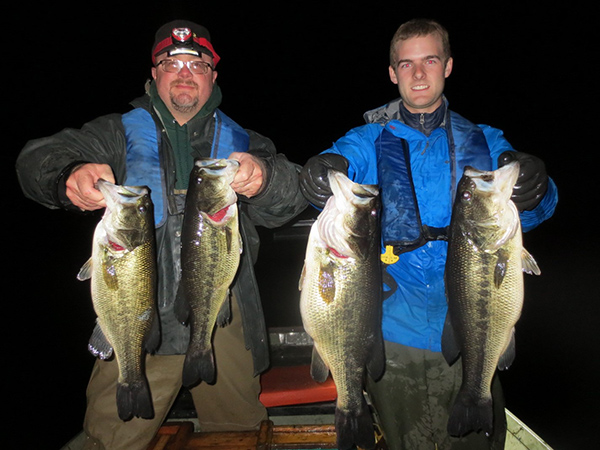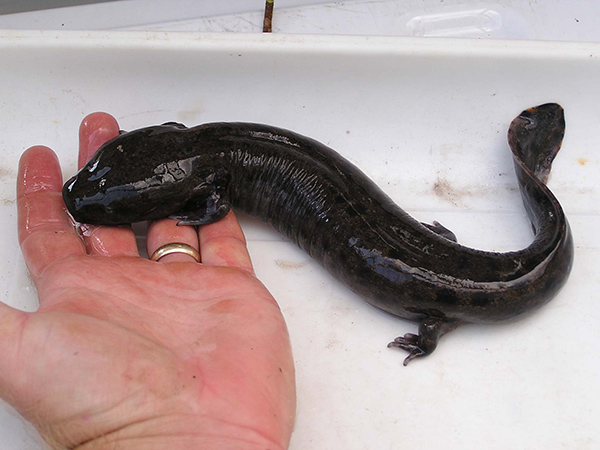- Details
By Louie Stout
By now you’ve probably heard about the fish kill at Diamond Lake that occurred earlier this month.
Based on best guess estimates, it affected about 1,000 fish of several different species.
It’s still under investigation by the Michigan DNR Fisheries and the Department of Environment and Great Lakes and Energy (EAGLE), formerly known as Department of Environmental Quality (DEQ).
Don’t expect much to come out of this investigation. Fisheries Biologist Matt Diana was at Diamond last week and said the fish he saw had already begun decomposing, too late for any analysis.
“We’ve been getting a lot of calls from people around the lake; as the winds shift dead fish move from one shore to the other,” he said. “It’s difficult to determine what killed them or how many, but I can say that it wasn’t a major kill and shouldn’t have a big impact on fish populations.”
Dead fish showed up two days after the lake had been treated with chemicals to kill non-native vegetation.
Diana wouldn’t single out the chemical application as the sole cause, but said it may have contributed to it.
- Details
By Louie Stout
I can’t help but notice a disturbing trend in boating accidents and drownings throughout Indiana this year.
I have seen some really unfortunate accidents in Indiana DNR Law Enforcement reports that could have been easily prevented with a little common sense.
“It seems like every spring we see an influx of drawings because everyone is eager to get on the water even though our waterway levels are elevated,” said Capt. Jet Quillen of the Indiana DNR. “People put themselves in dangerous situations by going onto flooded or high water. The current is faster and they lose control.”
This brings me to the point of this column: Kayaks - from which a number of people have died this spring.
- Details
By Louie Stout
 Northern fisheries supervisor Jeremy Price (left) and DNR aid Logan Halderman show off some of the big bass biologists captured during a Big Long Lake assessment of the slot limit the DNR imposed on the lake five years ago. The largest weighed 7 pounds and all of the fish were released alive. (Indiana DNR photo)
Northern fisheries supervisor Jeremy Price (left) and DNR aid Logan Halderman show off some of the big bass biologists captured during a Big Long Lake assessment of the slot limit the DNR imposed on the lake five years ago. The largest weighed 7 pounds and all of the fish were released alive. (Indiana DNR photo)
The pending results of an experimental bass size limit on Big Long Lake may lead to more Indiana lakes with a slot limit structure.
That’s the view of northern Indiana biologists who are conducting a study of what could be done on lakes that have an overabundance of undersize (less than 14 inches) bass.
A slot limit prohibits anglers from keeping bass between 12 and 15 inches and permits only two bass over 15 inches. The bag limit remains five, so they can fill out limits with bass under the slot limit or keep up to 5 “unders.” It is the same regulation in place on the St. Joseph River in Indiana.
As we mentioned here earlier this year, the DNR has noticed a trend of too many little bass and darn few quality bass in some lakes. It’s taking a closer look at those lakes to get a better handle on the numbers.
Bass over-population, coupled with slow growth, has been an emerging problem on some natural lakes ever since Indiana went to a statewide 14-inch size limit.
- Details
By Louie Stout
 Creepy Mudpuppies are Kinda Cool - Indiana DNR Photo
Creepy Mudpuppies are Kinda Cool - Indiana DNR Photo
Creepy Mudpuppies are Kinda Cool - Indiana DNR Photo
During a recent conversation with Indiana District Fish Biologist Tom Bacula, he mentioned encountering “mudpuppies” during a fish survey on Maxinkuckee Lake.
“We don’t see many on other lakes, but find them often when we’re on Maxinkuckee,” Bacula said. “They like nice clean water.”
Mudpuppies are members of the salamander family and can be found in lakes, rivers and ponds. Most are rusty brown or have a gray and black back and grow to a little over 13 inches.
They have little legs and “feet” that allows them to craw on the bottom, and can look a little like newborn dog puppies. They have small mouths and bushy gills on the side of the head. While some salamanders survive on land, these do not.


